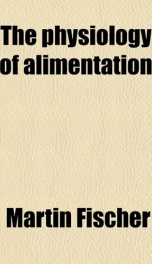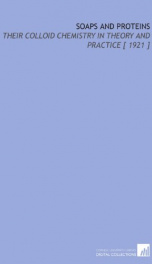the physiology of alimentation

Purchase of this book includes free trial access to www.million-books.com where you can read more than a million books for free. This is an OCR edition with typos. Excerpt from book: of which are under the control of the will. The lower maxillary bone may be dropped and raised, may be thrown forward and drawn backward, and may be moved from side to side. Ordinary mastication in the human being is a combination of all these movements. The lower jaw is lowered and raised in the ordinary biting movements, and moved from side to side when the food is being chewed. Combined with both of these may be more or less well-marked forward and backward movements of the jaw. The food is kept between the teeth and the act of mastication made more effective by the simultaneous action of the muscles of the tongue, cheeks, and lips. The cheeks, and more especially the tongue, aid also in gathering together the food in the mouth and forming it into a bolus preparatory to the act of swallowing. The muscles concerned in the movements of the lower jaw are the following. The masseter, temporal, and internal pterygoid raise the jaw. The digastric is the chief depressor of the lower maxilla, aided at times by the mylo-hyoid and genio-hyoid muscles. The jaw is thrown forward by the simultaneous contraction of the external pterygoids. When these muscles move singly, side-to-side movements are produced. The jaw is retracted by contraction of the temporal muscle. The muscles of mastication receive their nerve supply from the inferior maxillary division of the fifth cranial nerve with the exception of the genio-hyoid, which is supplied by the hypoglossal nerve. 3. Deglutition.It seems to be essential for the proper performance of the act of deglutition that the mass to be swallowed be moist. Dry material can either not be swallowed at all or afc, best -with difficulty. While certain substances may therefore be 'swallowed immediately, it is necessary for others that they remain in th...
Info about the book
Author:
Series:
Unknown
ISBN:
0546862705
Rating:
3/5 (1)Your rating:
0/5
Languge:
English
Users who have this book
Users who want this book
What readers are saying
What do you think? Write your own comment on this book!
write a commentGenre
if you like the physiology of alimentation try:
Do you want to exchange books? It’s EASY!
Get registered and find other users who want to give their favourite books to good hands!



